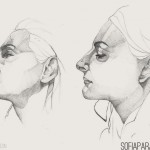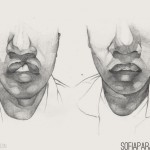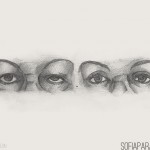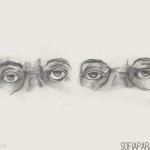Eyelid reduction or surgery can address excess of skin, bagginess, sun damage (fine wrinkles) and in people of oriental origin the absence of the eyelid crease in the upper eyelid or fold of skin in the medial corner.
Some patients may develop these problems earlier than expected due to an inherited tendency. Puffiness around the eyes can also be a sign of allergies or water retention. If you have any doubt concerning your eyes you should have them tested beforehand by an ophthalmologist.
The surgery
Can be performed in conjunction with other aesthetic procedures for example a facelift or brow lift. If the eyebrow is drooping it is also advisable to have that corrected first (see the section on browlift). The procedure can be performed under a general or local anaesthetic and sedation. The upper eyelid reduction can sometimes be performed under local anaesthetic without sedation.
The scar in the upper eyelid lies in the natural eyelid crease and just under the lashes in the lower eyelid extending slightly outward into one of the ‘laughter lines’. The bagginess in the lower eyelids can sometimes be addressed through an incision on the inside of the eyelid (transconjunctival) without any visible external scar.
The scar of eyelid surgery normally heals well and becomes invisible once the redness disappears after a few weeks. Sometimes resurfacing using a fractional CO2 laser can provide a certain amount of tightening of the skin (see section on laser resurfacing). The fine lines can be addressed by administering Botulinum toxin (Botox). The surgery can be performed as a day case and recovery take around two weeks.
Complications
There is a small risk that the operations could be complicated by any of the following:
• A collection of blood under the skin if one of the blood vessels open up after the surgery (haematoma) this will resolve if small but may have to be drained if large
• The eyelid margin may be pulled away from the globe in the early phase but will most of the time correct itself. In-patient undergoing secondary surgery or with very lax lower eyelids it may be necessary during the surgery to also perform an anchoring stitch to the eyelid margin (canthopexy) in order to prevent this being a permanent feature
• Influenced vision is extremely rare and mostly read about in medical textbooks only
• Small white cysts may form at the suture lines and will need to be drained with a needle. Sometimes they have to be surgically removed
After the surgery
The eyelids will feel sore and gritty for a few days. Natural tears may provide some relief as well as cold water compresses. You should sleep with a few pillows in the semi-upright position to improve drainage.
Sutures are removed at 4-5 days and it should be safe to apply eye make-up after 7 days. No heavy exercise should be undertaken for the first two weeks.
















